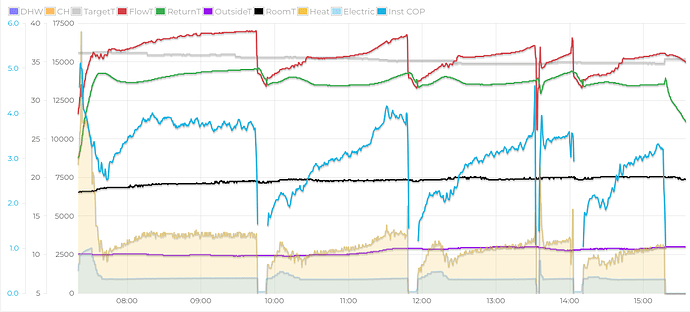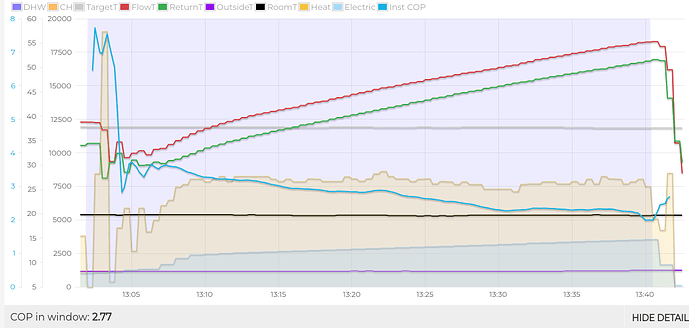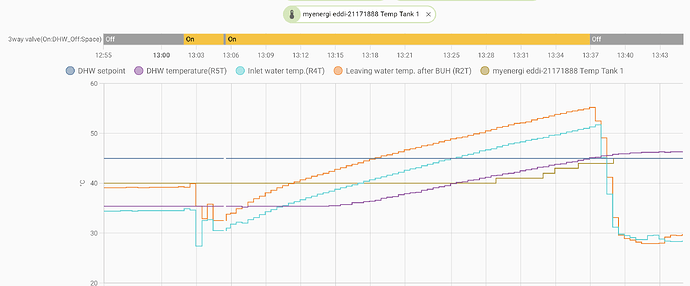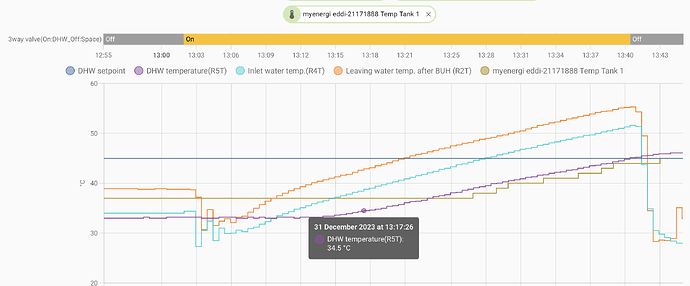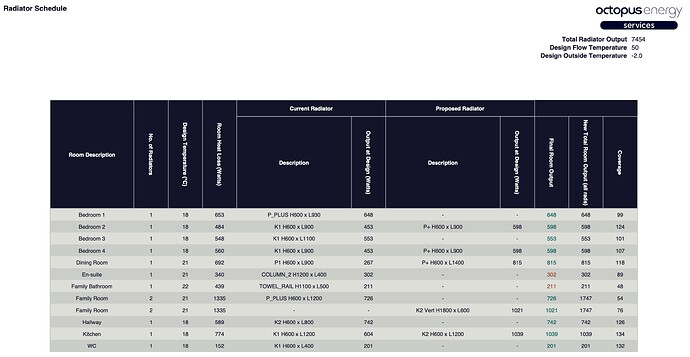I’ve got a 9kW Daikin system, installed by Octopus. With the help of members here, I’m monitoring it using ESPAltherma and a CT connected to a MyEnergi Eddi. The data is logged to Home Assistant and published to emoncms and heatpumpmonitor:
https://heatpumpmonitor.org/system/view?id=120
The house is 1960s detached, two storey and with reasonable insulation. The design flow temperature is 50C at -2C with a calculated heat loss by Octopus of approximately 7.5kW (according to the Radiator Schedule). We have radiators (no underfloor heating), a 250L Daikin hot water tank and a 20L volumiser. The heat pump has a pipe run of approximately 11m before it enters the house. The house has been extended and probably has a funny internal pipe run.
I’m running the following WD curve:
45C at -2
33C at 16C
Room thermostat control with a -1C thermostat offset to match the ambient temperature better.
I’ve configured 1C of modulation and 4C of overshoot.
Typical temperature targets are 19C from 6am to 10pm, 17C set-back overnight.
Hot water is schedule-only at 1pm, to heat to 45C. I use the Eddi to boost higher.
I’ve balanced the radiators so they all heat up satisfactorily with a decent temperature drop, although they aren’t all managing a delta of 5C. I’ve done this mostly to try and ensure there’s no unexpected short-return paths to the heat pump that might explain the high return temps it only seems to achieve (see below).
Some observations from my data:
- The difference between the R1T (before back-up heater) and R2T (after BUH) measurements is about 1.9C
- My system struggles to drive the LWT below about 33C. I’ve tried a lower weather curve and the system tries to get to a lower return temp, but can’t achieve it at minimum power and flow rate, and the flow-return dT doesn’t hit 5C and so the resulting COP is poor.
- It performs best (COP near 4.0) when it is ‘walking’ the flow temperature above the target temperature. It did this yesterday morning, but today the LWT has been sat mostly on or near to the target temp.
- The system seems to allow heating to continue running until about 20.5C which is pretty wild for a 19C target temp.
Any thoughts or suggestions most welcome ![]()
Things I might try, after I’ve gathered a bit more data:
a) 4C delta-T, to see if it encourages the system to use a bit more power and higher flow rates
b) a slightly higher weather curve
